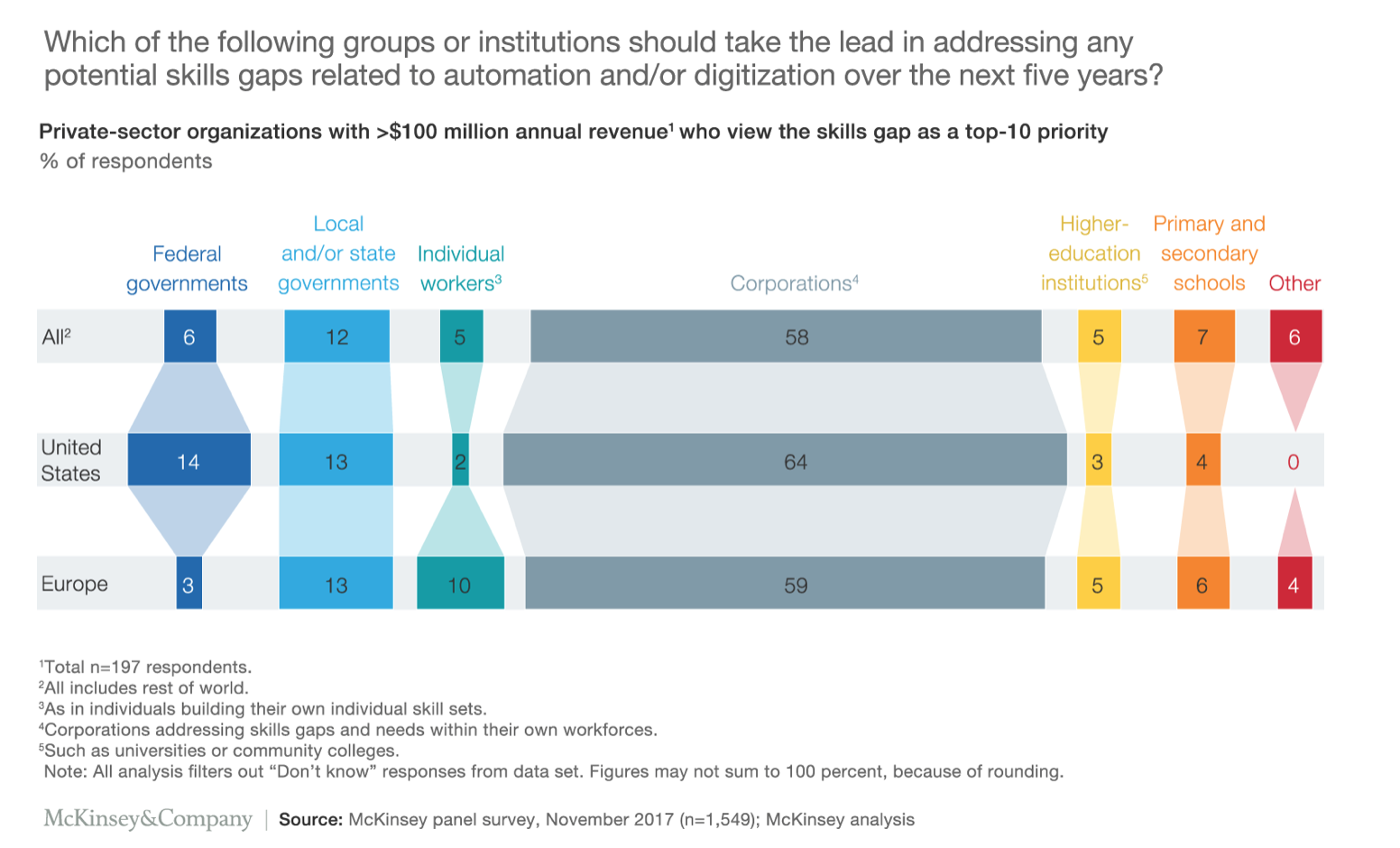You have /5 articles left.
Sign up for a free account or log in.
By now we all know the signs that it’s no longer ‘business as usual’ for the higher ed community – the signs are everywhere from Moody’s investor reports, the number of school mergers and closings, demographic changes, declining international student enrollments, and beyond. There is some very good news about innovations, as well, including some new and not-so-new innovations from edX, Minerva, and Georgia Tech, among others. This a heartening news, but not yet sufficient to address the seismic shifts happening in the world of work.
A recent McKinsey Global Institute article mentions that “as many as 375 million workers – or roughly 14 percent of the global workforce may need to switch occupational categories as digitization, automation, and advances in artificial intelligence disrupt the world of work. The kinds of skills companies require will shift, with profound implications for the career paths individuals will need to pursue.” When McKinsey asked private-sector organizations with more than $100 million in annual revenues who view the skills gap as a Top-10 priority (which was 66% of respondents), very few of them believe that institutes of higher education should take the lead. They think that corporations themselves should lead the effort.

Some corporations are already beginning to take the lead. A recent Wall Street Journal article, “More Companies Teach Workers What Colleges Don’t“ [behind pay wall], notes that “technology is changing faster than colleges can keep up and employers say too many schools aren't teaching students the skills they need – or even basic critical thinking.” The article goes on to say that many companies “are hiring workers because of what they can do, or what the company believes it can teach them, instead of the degrees they hold”.
All of this, of course, isn't good news for colleges and universities and schools won’t be able to cost cut their way out of this problem. This is a job for innovation, which has become a hot topic these days, as colleges and universities look for new revenue streams.
When thinking about innovation, it’s important to thing about addressing two types of gaps:
- The Performance Gap is about closing a known gap. For example, a gap between where a college or university performs relative to past performance, relative to competitors, or even to industry standards. This is “small i innovation” aimed at getting better at what the school already does. It’s the land of best practices and improved efficiencies. As Vijay Govindarajan from Dartmouth says, “you’ve got to improve the efficiency of your current businesses.” However, to move from surviving to thriving takes closing a completely different gap.
- The Opportunity Gap is about competing in and for the future – it’s about closing the gap between where a college or university performs now and toward a position of leadership in an evolving industry. This “big i innovation” takes foresight, insight and courage, like the famous Wayne Gretzky quote, “A good hockey player plays where the puck is. A great hockey player plays where the puck is going to be.” As Govindarajan explains, “The basic idea here is the future is now. It’s not what you have to do in the future. . . if you . . want to be a leader in the year 2020, the job does not start in the year 2020. The job starts today.” This is a land where road maps and best practices don’t yet exist; it’s a place of exploration, experimentation, and learning from these experiments to hone the innovation – and begin to create the future.
Most schools seem to focus mainly on the performance gap – getting better at what they do and adding more of what they do, repackaged for new audiences. While it’s important that schools continue to innovate in this way, much more will be needed to succeed in the new world of work – and the evolving world of higher education. It’s my hope that school leaders will put more ‘big i innovation’ discussion (and follow through with experimentation) on the agenda at their next strategic offsite and/or Board meeting. There is a lot riding on the results.
What innovations are your school pursuing?





